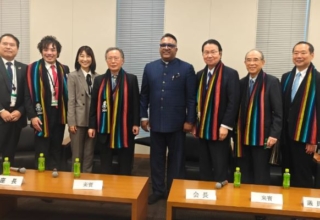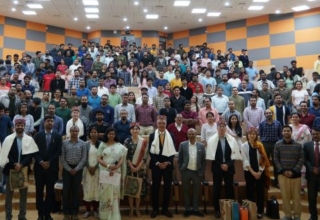
Mirroring a countrywide trend of shutting down schools, North Delhi (Municipal) Corporation finalized a proposal to merge 20 of its schools and create 10 out of this in December 2018. The three municipal corporations which together have 1750 primary schools with an aggregate of over 7.76 lakh students, had reliably identified 200 low enrolment schools for closure by November 2018. Under the so called rationalization process adopted by several states, school closure is smartly rebranded as merger, consolidation or amalgamation, the rationale presented is better utilization of resources, efficiency, staff and teacher pooling to fill up the teacher vacancies, etc.
According to some reports as many as 2,60,000 schools under government management in the country have either faced closure or in the process under this tinkering in clear contravention of the section 3(1) of the Right to Education Act, 2009, which provides for a school to a child within one kilometer radius of his or her residence. At the same time, it is also making a case for reconsidering this distance-based norm for school construction altogether and may become basis for another amendment to RTE Act.
Experts feel that there is need to look for reasons into low enrolments in government primaries as the trend may prove a disaster in the long term. “We as a society must decide if we want to educate our children at all? Why have people kept silent on section 29 of the RTE Act and developed a parochial mindset on school education? Education is an engineering concept and therefore needs a multidimensional approach to make it doable. Harping on standalone ‘quality’ makes no sense if don’t go by standards or develop models,” said Parliamentarian, Pradeep Tamta at a recent consultative meeting of the RTE Forum in New Delhi.
While Delhi Commission for Protection of Child Rights (DCPCR) school evaluation project which began on December 1 for assessment of schools may have run into rough political weather after BJP-controlled municipal corporations said no to it on the rationale that AAP government wanted to show their schools in poor light for political mileage, activists say the pathetic condition in which children in some of the municipal school study is nobody’s concern in this blame game. “No window glass panes, no doors, sitting on worn and torn ‘taat’ (narrow floor rugs), the children are left to fend for themselves. We tried to cover some places with curtains but what about DCPCR and other government agencies, aren’t these conditions moving their hearts?” said one activist on condition of anonymity.
So, it also comes to light that there is no building code or standard technical assisance for primary schools in the country and all additional classrooms etc are built like any block development or MNREGA work mostly proportionate to funds after due ‘cuts.’ In fact, as per the spending on approved budgets in education is progressively declining. While it was 84% in 2013-14, it came to 66% in 2016-17 and half of that on June 30, 2017. In the whole year of 2017, the GDP spending on education dropped to 2.7.
The project implementation agencies under SSA have consistently failed to utilize approved budgets and as such the condition of classrooms in good category in primary government schools has also fallen from 75% to 73% last year (2017).
According to data, while government schools have increased by about 2% in the country in last a few years, the private school segment has seen a robust growth of over 26% in the corresponding years. While this partly conforms with popularity of private schools with parents, there is no denying that neglect of its own schools by government is adding to this skewed growth. There are an estimated nine lakh teacher vacancies all over the country, which is directly impacting government school sector. At the same time, some people see a conspiracy of vested interests in throwing government sector out of school education space. “There is a conspiracy to defame government schooling system. Any incident in a government school is villianized to paint the whole system with it. The stories written about government schools, students and teachers are those where people form low opinions of all three,” said Naveen Sangwan, General Secretary of All Delhi Primary Teachers Association.
According to newly released Global Education Monitoring Report of the UNESCO, ‘Migration, Displacement and Education’, children of seasonal workers are often denied their right to education. About 80% of temporary migrant children in seven Indian cities lacked access to education near work sites even as Right to Education Act legally obliged local authorities to admit migrant children, while national guidelines recommend flexible admission, seasonal hostels, transport support, mobile education volunteers and improved coordination between states and districts. An estimated 9 million migrated between states annually from 2011 to 2016 the report cites. Therefore, the role of municipal schools will remain all the way crucial for education needs of this lot of children.
Now all eyes will be on the soon to be released New National Policy on Education to determine, how much of remedial recourse will be available on this crucial area of concern. ..Autar Nehru










